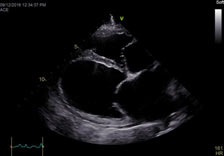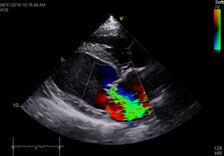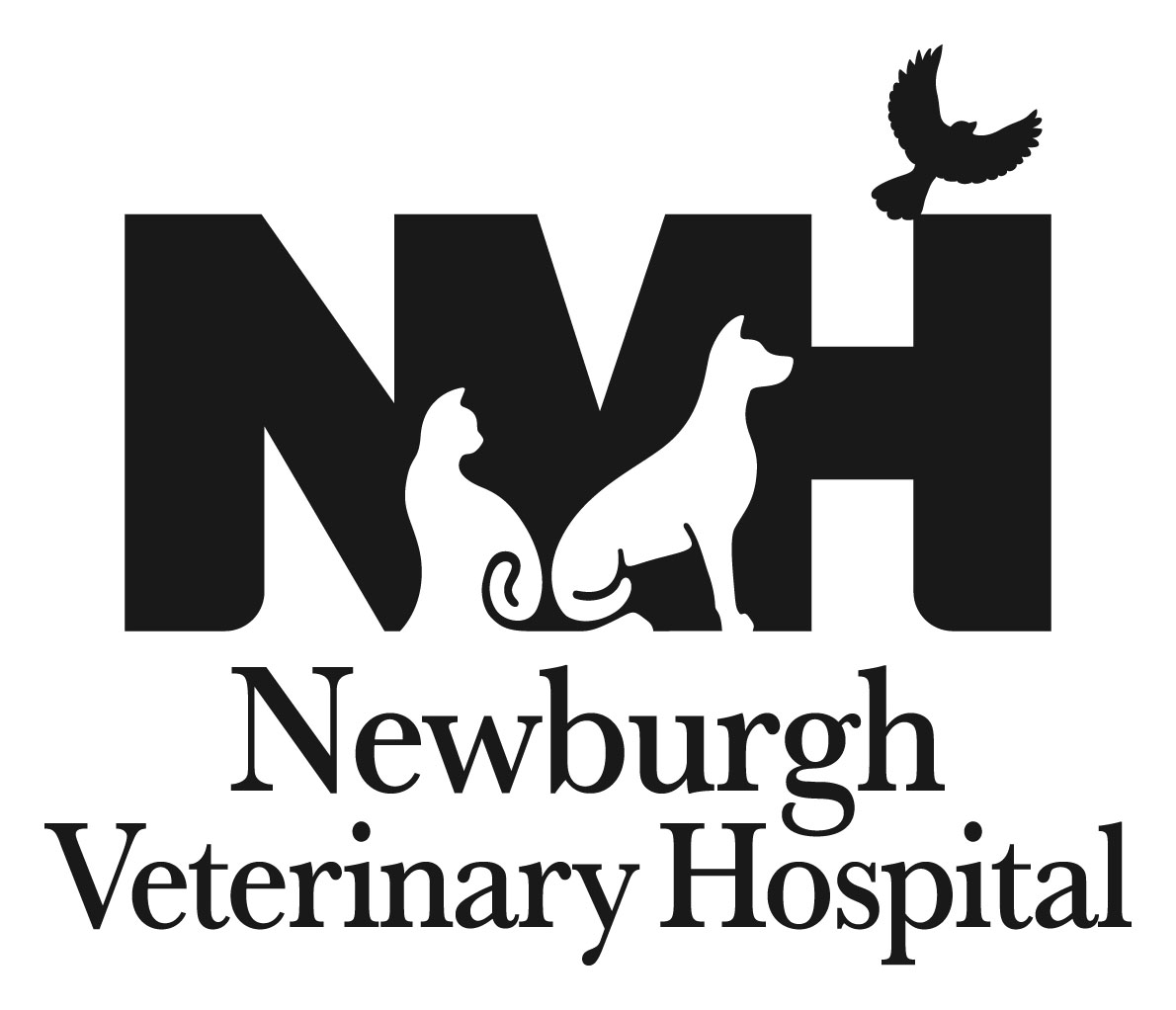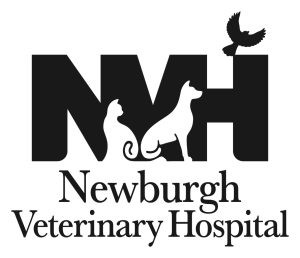Cardiology
Our hospital offers echocardiography as one of our many cardiology services. An echocardiogram is an ultrasound (sonogram) exam of the heart. Many times both radiographs (X-rays) and ultrasound of the heart are recommended for best evaluation of heart disease. X-rays show the size, shape and position of the heart and the ultrasound allows your veterinarian to see the internal structure and function of the heart. The power of echocardiography is the ability to look inside the heart at various structures. Wall thickness can be measured, valves can examined and the flow of blood can be evaluated. These, and other parameters, allow your veterinarian to diagnose and provide appropriate treatment recommendations for diseases of the heart.
The hair on the chest wall behind a pet's elbow area may be clipped to allow adequate visualization of the heart during the ultrasound. Gel is then placed on the skin in this area and the ultrasound probe to record images of the heart. Ultrasound produces a cross-sectional two-dimensional view of the heart by bouncing high frequency sound wave off the heart. The sound that is reflected back to the probe is used to compose an image. Echocardiography is non-invasive and well-tolerated by most pets.
Schedule an appointment for your pet's health today!
Echocardiology
An echocardiogram, or cardiac ultrasound, is a vital diagnostic tool that provides detailed information about your pet's heart health. It is a non-invasive procedure that is generally well-tolerated by pets. It does not require anesthesia in most cases and provides immediate results, allowing veterinarians to make prompt treatment decisions if necessary. By incorporating echocardiograms into your pet’s wellness routine, you’re investing in their long-term health and ensuring they receive the best possible care for their cardiovascular system.
Echocardiograms are important for some pets because:
- An echocardiogram allows veterinarians to assess the structure and function of the heart. This imaging technique provides real-time images of the heart chambers, valves, and major blood vessels, allowing for accurate diagnosis of various cardiac conditions such as congenital heart defects, valve disease, and cardiomyopathy. Early detection of these conditions can lead to timely interventions and improved outcomes for your pet.
- Some heart conditions in pets may not show obvious symptoms until they are advanced. Regular veterinary check-ups may include listening to the heart with a stethoscope, but an echocardiogram provides a more comprehensive evaluation. It helps veterinarians detect abnormalities such as abnormal heart rhythms, enlarged chambers, or weakened heart muscle that may not be detectable through routine examination alone.
- Certain breeds of dogs and cats are predisposed to specific cardiac issues. Breeds like Cavalier King Charles Spaniels, Boxers, and Maine Coon cats are known to be at higher risk for certain heart diseases. For these breeds, routine echocardiograms can be especially beneficial in monitoring heart health and catching potential problems early.


Electrocardiography (ECG or EKG)
Electrocardiography measures the electrical activity of the heart. It records the electrical impulses that trigger each heartbeat and provides information about the heart's rhythm, electrical conduction, and overall cardiac function.
An electrocardiogram can help diagnose arrhythmias (irregular heartbeats), conduction abnormalities, and other electrical issues. It is particularly useful for detecting problems with heart rate and rhythm.
At Newburgh Veterinary Hospital, we place electrodes onto your pet's skin in specific locations on the chest and limbs. These electrodes detect the electrical signals generated by the heart and then these signals are then displayed as a series of waves on a graph or monitor.
Holter Monitoring
Holter monitoring is primarily used to diagnose and monitor arrhythmias (irregular heartbeats) that might not be detected during a standard ECG due to its short duration. This portable device is used to continuously record heart rhythm over an extended period of time, typically 24 to 48 hours.
The Holter monitor consists of a small, lightweight recorder attached to the animal's body with adhesive electrodes placed on specific locations. The device continuously captures and stores the heart’s electrical activity throughout the monitoring period, allowing for a comprehensive assessment of heart rhythm and rate.
This extended monitoring is valuable for detecting intermittent arrhythmias, assessing the frequency and type of abnormal heartbeats, and evaluating the effectiveness of treatments for cardiac conditions. It also helps in understanding the correlation between clinical signs (like fainting or lethargy) and arrhythmic events.
After the monitoring period, the data is downloaded and analyzed by a veterinary cardiologist, who interprets the results to make a diagnosis and recommend appropriate treatment or management strategies. The Holter monitor provides a detailed view of the heart's behavior over time, offering insights that might not be captured in a brief ECG recording.


